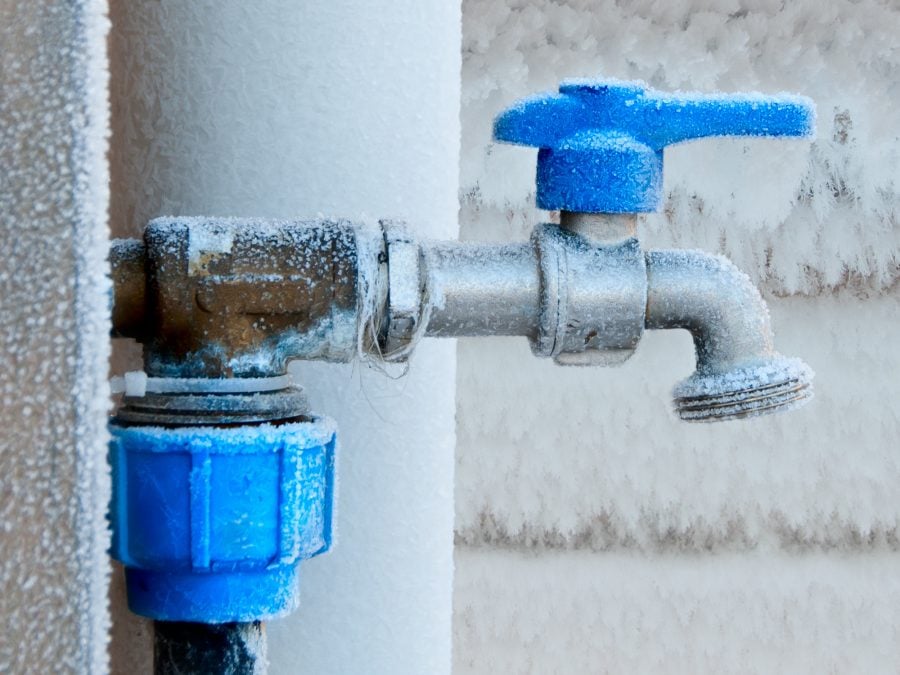This article down below about Prevent Frozen Pipes is truly enlightening. You should keep reading.

Winter can wreak havoc on your plumbing, specifically by freezing pipelines. Here's exactly how to stop it from happening and what to do if it does.
Introduction
As temperature levels decline, the danger of frozen pipes rises, potentially resulting in costly fixings and water damage. Understanding exactly how to avoid frozen pipelines is vital for homeowners in chilly climates.
Recognizing Icy Pipelines
What triggers pipes to ice up?
Pipelines freeze when exposed to temperature levels listed below 32 ° F (0 ° C) for extended durations. As water inside the pipes freezes, it increases, putting pressure on the pipe wall surfaces and potentially creating them to rupture.
Risks and problems
Frozen pipelines can lead to water interruptions, residential or commercial property damages, and expensive repair services. Ruptured pipes can flood homes and create comprehensive architectural damages.
Signs of Frozen Pipeline
Determining icy pipes early can prevent them from bursting.
Exactly how to determine icy pipelines
Seek lowered water circulation from taps, uncommon smells or sounds from pipes, and visible frost on exposed pipes.
Avoidance Tips
Insulating susceptible pipelines
Cover pipes in insulation sleeves or use heat tape to safeguard them from freezing temperatures. Focus on pipes in unheated or external locations of the home.
Home heating techniques
Keep indoor areas appropriately heated, specifically areas with pipes. Open cabinet doors to enable cozy air to circulate around pipes under sinks.
Safeguarding Outdoor Plumbing
Yard hose pipes and exterior faucets
Separate and drain garden tubes before winter months. Install frost-proof spigots or cover outside faucets with shielded caps.
What to Do If Your Pipes Freeze
Immediate actions to take
If you presume frozen pipes, keep taps open to soothe pressure as the ice thaws. Use a hairdryer or towels taken in warm water to thaw pipes gradually.
Long-Term Solutions
Structural adjustments
Think about rerouting pipelines away from outside walls or unheated locations. Add additional insulation to attics, cellars, and crawl spaces.
Updating insulation
Buy high-quality insulation for pipes, attics, and wall surfaces. Appropriate insulation helps keep consistent temperature levels and decreases the danger of frozen pipes.
Verdict
Protecting against frozen pipes needs proactive measures and quick reactions. By understanding the reasons, indications, and preventive measures, home owners can protect their plumbing throughout winter.
5 Ways to Prevent Frozen Pipes
Drain Outdoor Faucets and Disconnect Hoses
First, close the shut-off valve that controls the flow of water in the pipe to your outdoor faucet. Then, head outside to disconnect and drain your hose and open the outdoor faucet to allow the water to completely drain out of the line. Turn off the faucet when done. Finally, head back to the shut-off valve and drain the remaining water inside the pipe into a bucket or container. Additionally, if you have a home irrigation system, you should consider hiring an expert to clear the system of water each year.
Insulate Pipes
One of the best and most cost-effective methods for preventing frozen water pipes is to wrap your pipes with insulation. This is especially important for areas in your home that aren’t exposed to heat, such as an attic. We suggest using foam sleeves, which can typically be found at your local hardware store.
Keep Heat Running at 65
Your pipes are located inside your walls, and the temperature there is much colder than the rest of the house. To prevent your pipes from freezing, The Insurance Information Institute suggests that you keep your home heated to at least 65 degrees, even when traveling. You may want to invest in smart devices that can keep an eye on the temperature in your home while you’re away.
Leave Water Dripping
Moving water — even a small trickle — can prevent ice from forming inside your pipes. When freezing temps are imminent, start a drip of water from all faucets that serve exposed pipes. Leaving a few faucets running will also help relieve pressure inside the pipes and help prevent a rupture if the water inside freezes.
Open Cupboard Doors
Warm your kitchen and bathroom pipes by opening cupboards and vanities. You should also leave your interior doors ajar to help warm air circulate evenly throughout your home.
.jpg)
I came across that article about 6 Ways to Prevent Frozen Pipes while surfing the web. Remember to take the opportunity to promote this blog post if you enjoyed it. Thanks for your time. Revisit us soon.
Click For More Info